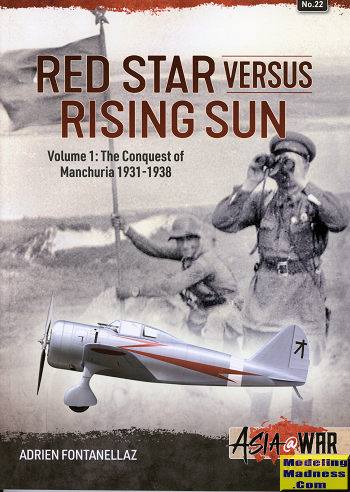 During
the late 19th and early 20th century, Japan was on the winning side of several
conflicts against both China and Russia. In all these cases, it was the lack of
cohesion of the opposition as well as the preparedness of the Japanese that made
the real difference. Following WWI, Russia was plagued by revolution and the
Chine was equally splintered. Despite the attempts of the Kuomintang under
Chiang Kai-Shek to unify the nation, there were simply too many warlords and
differing views to allow that to happen. Japan had become increasingly war-like
with the nation becoming more and more of a police state with the military
gaining increasing control.
During
the late 19th and early 20th century, Japan was on the winning side of several
conflicts against both China and Russia. In all these cases, it was the lack of
cohesion of the opposition as well as the preparedness of the Japanese that made
the real difference. Following WWI, Russia was plagued by revolution and the
Chine was equally splintered. Despite the attempts of the Kuomintang under
Chiang Kai-Shek to unify the nation, there were simply too many warlords and
differing views to allow that to happen. Japan had become increasingly war-like
with the nation becoming more and more of a police state with the military
gaining increasing control.
This led to the Japanese taking control of Korea and
eventually moving into China itself. During all of this, the Japanese eventually
took control of Manchuria. This made the Soviets very nervous and began a period
of tension and conflict between them in the late 1940s. Most of the issues had
to do with the border between Japanese controlled Manchuria and the Soviets as
many of the border areas were not well defined. This resulted in a number of
fairly fierce and somewhat short conflicts with the two nations.
This book is the first volume of the late 1930s
conflicts between Japan and the Soviet Union. As such, it concentrates quite a
bit on the background interactions of the two nations as well as the changes in
the political situation in both countries. The concentration on this one is the
Changkufeng incident, also known as the Battle of Lake Khasan. This took place
fairly close to the coast in a section that is bordered by Manchuria, Russia and
what is now North Korea. Both Korea and Manchuria (at the time the puppet state
of Manchukuo) were under Japanese control. Initially the Soviets took control of
a high ridge area that the Japanese considered their territory. It was then that
the Japanese sent troops into the area and it began two weeks of intense
conflict, one where the Soviets made major use of air power and tanks (both of
which did not work well for the Soviets). The Japanese did not use any air power
for fear that the incident would break out into full blown war with the Soviets.
As with any of the books that Helion has published, the
author has really done his homework and has provided an excellent history of a
fairly little known incident. As usual, there are superb period photos, and a
superb center section of color profiles and uniforms. It is a great read and a
book that I can quite easily recommend to you who want to learn something.
September 2021
Copyright ModelingMadness.com. All rights reserved. No
reproduction in part or in whole without express permission.
Review book courtesy of
Casemate Publishing, where you can order your copy
at this
link.
If you would like your product reviewed fairly and quickly, please
contact
me or see other details in the
Note to
Contributors.
 During
the late 19th and early 20th century, Japan was on the winning side of several
conflicts against both China and Russia. In all these cases, it was the lack of
cohesion of the opposition as well as the preparedness of the Japanese that made
the real difference. Following WWI, Russia was plagued by revolution and the
Chine was equally splintered. Despite the attempts of the Kuomintang under
Chiang Kai-Shek to unify the nation, there were simply too many warlords and
differing views to allow that to happen. Japan had become increasingly war-like
with the nation becoming more and more of a police state with the military
gaining increasing control.
During
the late 19th and early 20th century, Japan was on the winning side of several
conflicts against both China and Russia. In all these cases, it was the lack of
cohesion of the opposition as well as the preparedness of the Japanese that made
the real difference. Following WWI, Russia was plagued by revolution and the
Chine was equally splintered. Despite the attempts of the Kuomintang under
Chiang Kai-Shek to unify the nation, there were simply too many warlords and
differing views to allow that to happen. Japan had become increasingly war-like
with the nation becoming more and more of a police state with the military
gaining increasing control.